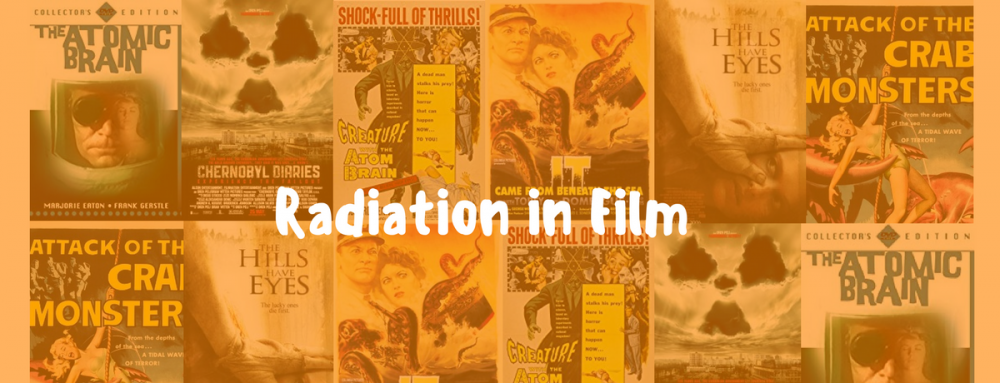
Andrew Newman PhD
Senior Director for Nuclear Fuel Cycle Activities
Atomic Pulse
In the world of horror cinema, bad things
come of meddling with the atom. In a recent article in the Bulletin
of the Atomic Scientists I made the case for the rich, if not distinguished,
history of American and European horror movies since 1950 that use radiation as
a central plot device. What follows is a summary of the Bulletin article as well as brief reviews of three radioactive
monster movies that did not make the cut.
The horror genre is deeply ambivalent toward scientific discovery. During the 1950s
and 1960s, scientists’ experiments regularly resulted in bigger and angrier ‘creatures’:
a 100-million- year-old ‘rhedosaurus’ in The
Beast From 20,000 Fathoms (1953); ants in Them! (1954); an octopus in It
Came From Beneath The Sea (1955); crabs in Attack of the Crab Monsters (1957); and locusts in Beginning of the End (1957). Scientists
also irradiated themselves – The Hideous
Sun Demon (1959), Atom Age Vampire
(1960) and Die, Monster, Die! (1965)
– and others – The Alligator People
(1959), The Beast of Yucca Flats
(1961) and Die, Monster, Die! again –
with equally disastrous, if more localized, results. Or they unleashed fantastic
terrors like the primordial ooze in X the
Unknown (1956) and the ‘mental vampires’ in Fiend Without A Face (1958). These incredible mutations of the
early Cold War most obviously represented international communism and, by the
end, the monster was destroyed and normality restored.
In the post-Vietnam/Watergate era, plots
are still largely driven by experiments gone awry but governments, corporations
and the military are co-conspirators and the end of the movie is far from the
end of the story. Radiation: reanimates dead bodies in Night of the Living
Dead (1968), Let Sleeping Corpses Lie
(1974), Fido (2006) and Dance of the Dead (2008); creates
psychotic killers in The Being (1983),
C.H.U.D. (1984), Nightmare City
(1980), Mansquito (2004) and the 2006 re-make of Wes Craven’s The Hills Have Eyes; is responsible for bizarre genetic mutation in
(Teeth,
2008); and weaponizes living creatures in Piranha (1978), It’s Alive III: Island of the Alive (1987) and Spontaneous Combustion (1990).
Three movies not mentioned
previously:
While very few of the listed movies are
considered classics or even particularly good within the horror genre let alone
the broader cinematic oeuvre, they reflect the anxieties of their eras and warn
of the timeless dangers of scientific hubris.
The zombie sub-genre, loosely defined, has
made a comeback in the 2000s, biology has superseded radiation as the mutagen: the
T-Virus in the Resident Evil franchise
(2002-2016); the Rage Virus in 28 Days
Later/28 Weeks Later (2002/2007);
Mad Cow Disease in Zombieland; and an
unnamed virus in World War Z (2013). The
persistence of myths and half-truths in the wake of the Fukushima accident in
2011 demonstrates that there is still much public confusion about the effects
of radiation. This is why the radioactive bogeyman, while unlikely to enjoy a
return to the halcyon years of the 1950s, likely has a long half-life.
Sign up for our newsletter to get the latest on nuclear and biological threats.
Nuclear Security is Only as Strong as the Weakest Link: 2020 NTI Index Highlights Cybersecurity and Insider Threat Prevention
Risk Reduction in Real Time: A Behind-the-Scenes View of Radiation Source Removal
What Were Hundreds of Nuclear Policy Wonks Doing in the California Desert? #INMM19!



